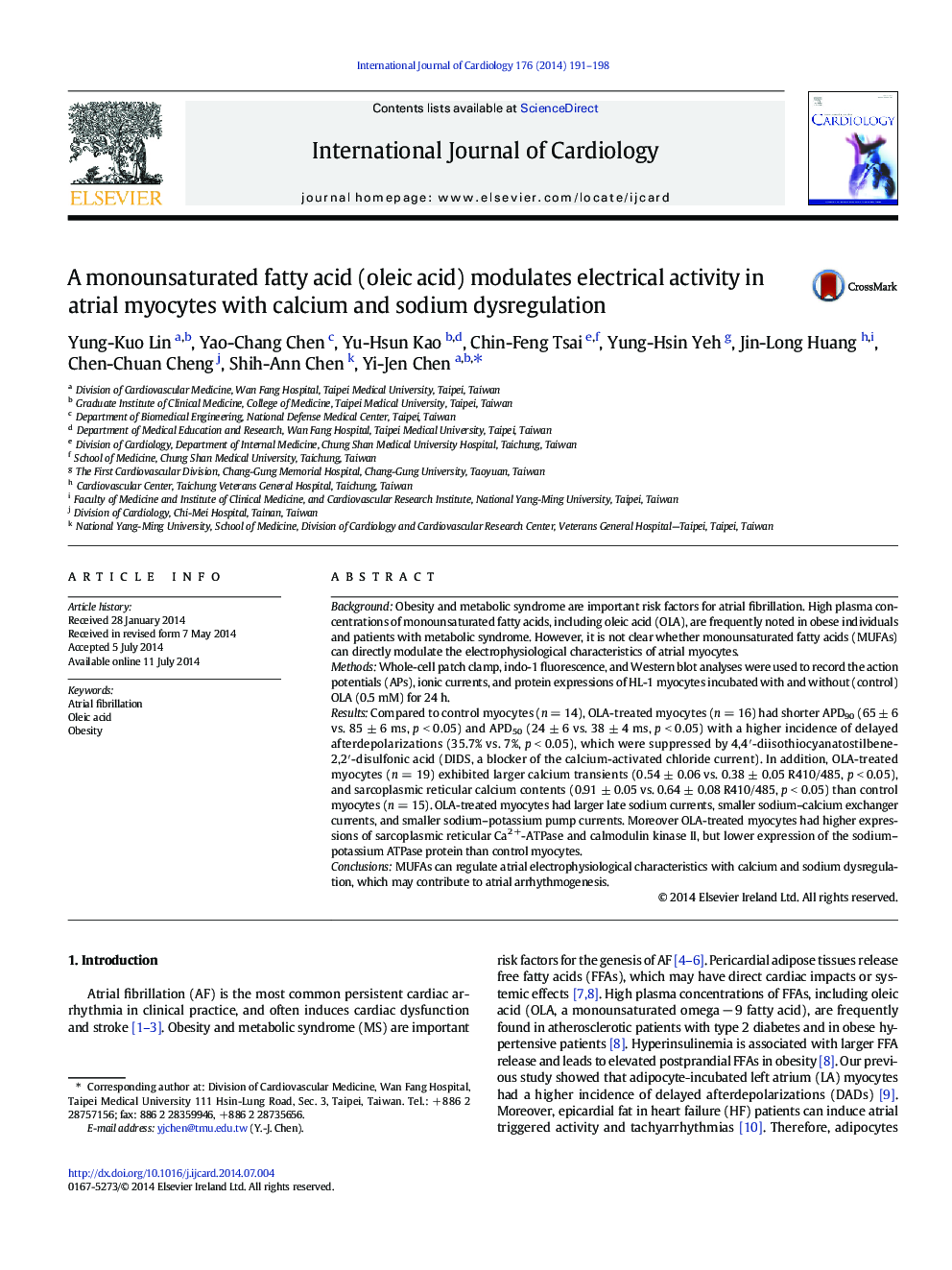| Article ID | Journal | Published Year | Pages | File Type |
|---|---|---|---|---|
| 5970677 | International Journal of Cardiology | 2014 | 8 Pages |
â¢We studied the electrophysiological effects of oleic acid (OLA) in atrial myocytes.â¢OLA shortened atrial action potential duration and induced triggered activity.â¢OLA changed late-Na+, Ca2 +-activated Clâ current, and Ca2 + homeostasis.â¢OLA enhanced SERCA and CaMKII, but inhibited Na+/K+ pump.â¢OLA induced-Ca2 + and -Na+ dysregulation may contribute to atrial arrhythmogenesis.
BackgroundObesity and metabolic syndrome are important risk factors for atrial fibrillation. High plasma concentrations of monounsaturated fatty acids, including oleic acid (OLA), are frequently noted in obese individuals and patients with metabolic syndrome. However, it is not clear whether monounsaturated fatty acids (MUFAs) can directly modulate the electrophysiological characteristics of atrial myocytes.MethodsWhole-cell patch clamp, indo-1 fluorescence, and Western blot analyses were used to record the action potentials (APs), ionic currents, and protein expressions of HL-1 myocytes incubated with and without (control) OLA (0.5 mM) for 24 h.ResultsCompared to control myocytes (n = 14), OLA-treated myocytes (n = 16) had shorter APD90 (65 ± 6 vs. 85 ± 6 ms, p < 0.05) and APD50 (24 ± 6 vs. 38 ± 4 ms, p < 0.05) with a higher incidence of delayed afterdepolarizations (35.7% vs. 7%, p < 0.05), which were suppressed by 4,4â²-diisothiocyanatostilbene-2,2â²-disulfonic acid (DIDS, a blocker of the calcium-activated chloride current). In addition, OLA-treated myocytes (n = 19) exhibited larger calcium transients (0.54 ± 0.06 vs. 0.38 ± 0.05 R410/485, p < 0.05), and sarcoplasmic reticular calcium contents (0.91 ± 0.05 vs. 0.64 ± 0.08 R410/485, p < 0.05) than control myocytes (n = 15). OLA-treated myocytes had larger late sodium currents, smaller sodium-calcium exchanger currents, and smaller sodium-potassium pump currents. Moreover OLA-treated myocytes had higher expressions of sarcoplasmic reticular Ca2 +-ATPase and calmodulin kinase II, but lower expression of the sodium-potassium ATPase protein than control myocytes.ConclusionsMUFAs can regulate atrial electrophysiological characteristics with calcium and sodium dysregulation, which may contribute to atrial arrhythmogenesis.
